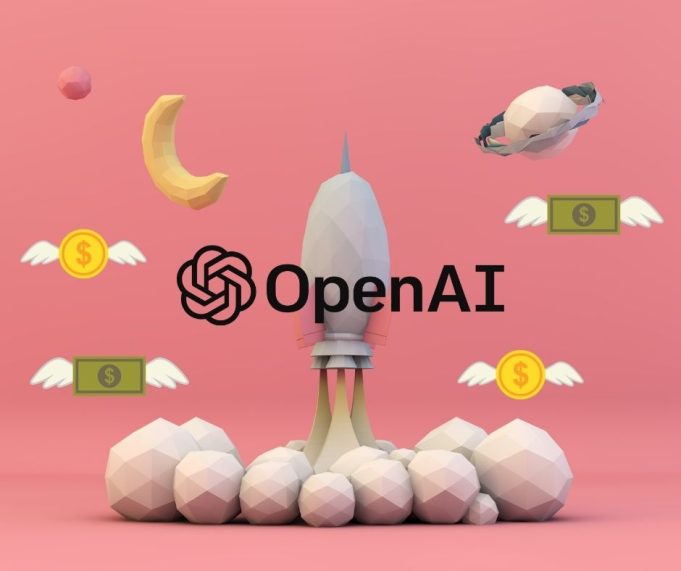OpenAI, an artificial intelligence company founded by Tesla founder Elon Musk and former YC president Sam Altman, has been around for seven years. Sam Altman left YC to become the CEO of OpenAI three and a half years ago. Sam believes that computers will soon be able to replicate the human brain and have their own desires and life goals. OpenAI is working to ensure that AI is developed responsibly and safely, so that it can be used to benefit humanity. OpenAI is researching and developing AI technologies that can be used to solve complex problems, such as natural language processing, computer vision, and robotics. OpenAI is committed to making sure that AI is developed in a responsible and ethical manner, so that it can be used to benefit humanity.
OpenAI, founded by Sam Altman and Elon Musk, is a research organization dedicated to developing artificial intelligence (AI) for the benefit of all mankind. The organization was created in response to the potential threat posed by Google’s DeepMind, which could become an immortal super dictator if something were to go wrong. OpenAI’s mission is to seize AI and research talent from for-profit giants such as Google and Facebook, and to use it to create a safe and secure AI environment. OpenAI has raised a billion dollars and hired a team of 30 researchers, but their ultimate goal is still unclear. OpenAI is committed to developing AI responsibly and ethically, and to ensuring that AI is used for the benefit of all mankind.
OpenAI, a non-profit artificial intelligence research company, was founded by Elon Musk to ensure that AI technology is accessible to everyone. To ensure that OpenAI can attract top talent from Google and Facebook, the company restructured its structure in 2019, creating a for-profit subsidiary and introducing a “profit ceiling” model. This model limits the return of early investors to 100 times their original capital and lowers the upper limit of returns for later investors. This model ensures that OpenAI remains focused on its mission of making AI technology accessible to everyone, rather than just focusing on profits.
OpenAI, a company founded by Sam Altman, has seen a huge success in the field of artificial intelligence. Last year, OpenAI’s valuation was close to 20 billion US dollars, making it the most valuable company supported by natural language AI in the world. In April of this year, OpenAI released Dall-e 2, a machine learning model developed by itself, specifically for generating digital images from natural language descriptions. In July, OpenAI officially started selling Dall-e 2 image generation software licenses, allowing other startups to launch services by purchasing this license. OpenAI’s success has been attributed to its strategy of “letting as many people as possible have artificial intelligence” and its 500-800 times forward sales valuation. With its innovative products and services, OpenAI is set to continue its success in the field of artificial intelligence.
OpenAI’s DALL-e 2 has officially unveiled robot-generated artworks in Silicon Valley, creating an AI-generated art feast on social media. However, since July, several generative AI companies have emerged throughout Silicon Valley and Europe, such as Midjourney, Jasper AI, Stable Diffusion, and Stability AI. Midjourney is already profitable in August, while Jasper AI was valued at more than $1.5 billion when it raised funds this summer. Stable Diffusion is a DALL-e 2-like text-to-image creation platform, and Stability AI was valued at 100 million when it raised its seed round, and jumped to 500 million in September. Last Monday, it announced that the company’s valuation was 1 billion. The valuation jumped from 100 million to 1 billion US dollars in two months.
Google and Facebook have recently been exploring the potential of AI to quickly generate video, but it is unclear whether they will commercialize these capabilities. OpenAI’s DALL-e 2 has stimulated the imagination of the Internet, but the sudden appearance of Stable Diffusion has surprised the AI world. Stable Diffusion was created and released in 2021 by Patrick Esser, a German academic researcher and now a researcher at Runway. Companies such as Runway and Stability AI are now using Stable Diffusion technology to develop tools for their own customers. Stability AI has approached Esser with the idea of donating computing power to further improve Stable Diffusion, and thus improve the software’s understanding of text and the quality of images it can generate. However, other startups can also use Stable Diffusion’s capabilities to sell similar image generation products.
OpenAI, a leading artificial intelligence research company, is currently in negotiations with Microsoft for a new round of financing. If successful, OpenAI’s valuation could jump again. Last week was a breakthrough moment for generative AI, with major thinkers in the investment world expressing their views on the field. David Holtz from Midjourney believes that AI technology should be seen as an ‘engine of the imagination’, extending the human imagination rather than replacing it. However, there is a fear that AI technology could be misused, leading to a situation similar to that of the Lord of the Rings.













